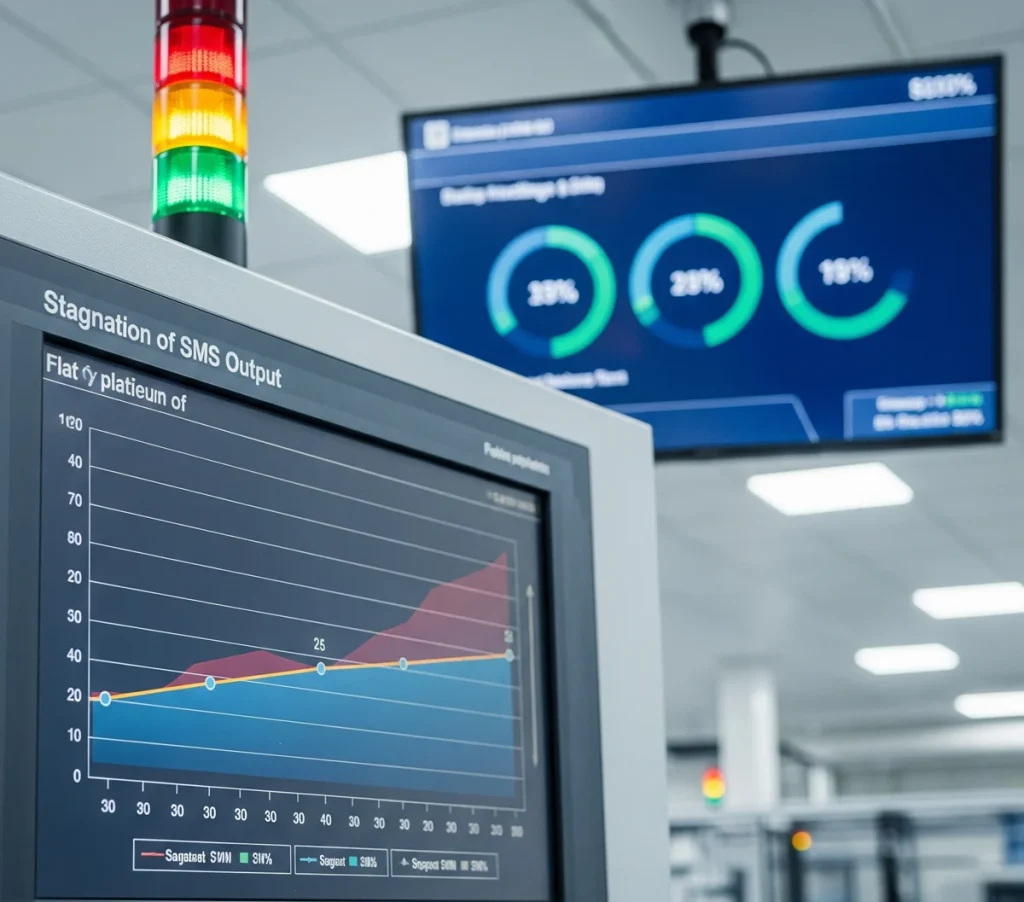Let’s start with the bitter truth: most Steel Melting Shops in India (and globally) are running at 70–80% of their actual potential; not because of equipment limits, but because of operational blind spots. The furnace is powerful. The crew is skilled. Yet, production fluctuates, quality wavers, and downtime creeps in.
So what’s the missing layer?
Data-backed decisions. Predictive process control. Smart automation. And most importantly, system-level integration.
This blog doesn’t promise magic. But it will show you, with logic and references, how productivity and quality in SMS can be systematically improved, using tools that are already available, with untapped potential in many current implementations.
Contents
1. The Problem is Not Equipment. It’s How You’re Using It.
Let’s borrow a truth from GMB Industries:
“The best approach is to improve the processes within the SMS department by implementing automation where it makes sense.”
Yet, in most plants:
- Charging is still reactive, not load-optimized.
- Slag chemistry decisions are manual, based on experience, not AI.
- Power usage is not balanced based on real-time temperature prediction.
- Maintenance is firefighting, not failure forecasting.
This is not an equipment issue. This is an intelligence gap.
Closing the Gap
The most forward-thinking plants are bridging this gap by building a dynamic, data-driven operational model of their SMS. Think of it as a “Digital Twin” of your melting process. This isn’t about replacing your experienced operators; it’s about arming them with predictive foresight.
Instead of relying solely on historical data and experience, this approach uses Artificial Intelligence (AI) and Machine Learning (ML) to analyze real-time data from every conceivable source, sensors in the Electric Arc Furnace (EAF), chemical analysis from the lab, scrap yard inventory, and even electricity price fluctuations. The system learns the unique personality of your furnace and predicts outcomes before they happen, turning your entire operation from reactive to predictive.
Where the Transformation Happens: Four Pillars of a Smarter SMS
This isn’t a single, monolithic change. It’s a strategic upgrade across the core functions of the Steel Melting Shop.
1. Charge Mix Optimization: The End of Guesswork
Your single biggest variable cost is raw materials. Yet, most charge mix decisions are a compromise between cost and the operator’s best guess on yield. An AI-powered system changes the game completely. By analyzing the chemistry, density, and cost of available scrap, it recommends the optimal charge mix for every single heat. The goal is no longer just to meet the target chemistry, but to do so at the absolute lowest possible cost while maximizing thermal efficiency. This alone can shave significant points off your production cost.
2. Predictive Chemistry & Temperature Control: Hitting the Bullseye, Every Time
The “golden rule” of SMS is hitting the target temperature and chemistry at tap. Missing it means costly corrections, extended tap-to-tap times, and potential quality rejection. ML models can predict the final carbon and temperature with astonishing accuracy based on real-time inputs like oxygen lancing, power input, and additions. The system can alert operators, “Based on the current trajectory, you will overshoot your temperature by 15°C,” and recommend the precise corrective action needed now, not after the next sample. This ensures endpoint consistency, which is the cornerstone of steel quality assurance.
3. Intelligent Energy Management: Slashing Your Power Bill
The EAF is an energy beast. But most plants use rigid, pre-programmed power profiles that don’t adapt. A smart system dynamically adjusts the power input based on the melt phase. It knows when to use a gentle “bore-in” and when to apply maximum power, all while communicating with the plant’s overall energy grid to avoid peak demand charges. This leads to a measurable reduction in lower electrode consumption, and less thermal stress on the furnace refractories.
4. Predictive Maintenance: From Firefighting to Forewarning
Unplanned downtime kills productivity. The traditional “run-to-failure” or calendar-based maintenance schedule is obsolete. By analyzing vibration, temperature, and hydraulic pressure data from critical components, AI models can detect subtle anomalies that are precursors to failure. Instead of a sudden breakdown of a furnace panel or transformer, you get an alert weeks in advance: “Abnormal vibration signature detected in Fan B. Predicted failure in 12-15 days.” This transforms maintenance from a cost center into a strategic tool for maximizing uptime.
Your Data is the New Steel
A word of caution, directly echoed by industry experts at Wizata: a smart system is only as good as the data it’s fed. “Garbage in, garbage out” has never been more true. Before embarking on this journey, the foundational step is to ensure you have a robust infrastructure of sensors and a clean, reliable data pipeline. Think of it as laying the rebar before pouring the concrete. Investing in accurate, high-frequency data collection is the non-negotiable first step to building a truly intelligent, technology-driven steel mill.
The plateau isn’t a permanent fixture. It’s a sign that the old methods have reached their natural limit. The tools to smash through that ceiling and unlock the remaining 20% of your plant’s potential are no longer theoretical—they are practical, proven, and delivering a powerful competitive edge to those who dare to evolve.
How Epsum Labs Bridges the Gap
The question, then, isn’t if you should adopt this technology, but how to begin the journey from data to decisions without disrupting your core operations. This is where theory meets execution, and where a specialized partner becomes critical.
At Epsum Labs, we specialize in bridging this exact gap. Our suite of AI-driven solutions is engineered specifically for the demanding environment of the Steel Melting Shop. We don’t offer generic platforms; we provide targeted, battle-tested models for:
- Charge Mix Optimization to slash raw material costs.
- Predictive Chemistry & Endpoint Control to guarantee quality and reduce tap-to-tap time.
- Intelligent Energy Management to cut down on electricity and electrode consumption.
- Predictive Asset Health Monitoring to eliminate unplanned downtime.
We partner with your plant’s operational experts, integrating our AI intelligence with their invaluable experience. Our goal is to augment your team, transforming your existing SCADA, PLC, and sensor data into a powerful predictive tool that provides clear, actionable recommendations right on the operator’s screen.
The plateau is a choice. If you’re ready to unlock the true potential of your SMS and turn operational data into your most valuable asset, the next step is a conversation. Reach out to the team at Epsum Labs to discuss how we can help you systematically dismantle your production barriers and achieve new levels of quality and efficiency.




